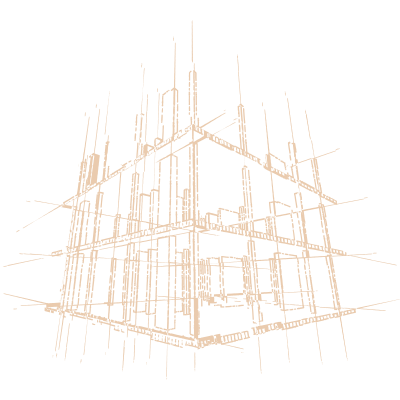
What did we discover at 3DaysofDesign?
The 3DaysofDesign festival in Copenhagen showcased a plethora of innovative ideas and trends poised to shape the future of commercial interior design. We were lucky enough to attend.

This year’s festival was a testament to the industry’s evolution, reflecting a blend of bold aesthetics, functionality and inclusivity. Let’s delve into the key trends that emerged from the festival, setting the stage for the next wave of commercial interior design.
One of the most striking trends we observed was the vibrant use of coral and orange hues. These colours were not just limited to playful accents, both natural and manmade, but were also used to completely colour drench spaces, creating immersive environments that exude warmth and energy.
Designers demonstrated how these bold colours could be integrated seamlessly into various commercial settings. Coral and orange were seen enlivening breakout areas, meeting spaces, and even drenching entire rooms, proving that such audacious choices can foster creativity and invigorate workspaces. This trend underscores a shift towards more daring and expressive colour palettes in commercial interiors.
The spaces drenched or decorated with orange felt warm, perhaps because of this colour’s connection to the sun and sunset. It’s a colour that isn’t associated with any particular gender, it’s use in the gender-neutral bathrooms in The 25 Hour Hotel was a creative testament to this.
Curved furniture made a significant impression at the festival, symbolising a deeper connection to nature and a commitment to inclusivity. Soft, flowing lines and organic shapes dominated the exhibits, offering a stark contrast to the rigid, angular designs of the past.
This trend reflects a growing understanding of the psychological and emotional impacts of design. Curved furniture is not only aesthetically pleasing but also promotes a sense of comfort and relaxation. In the context of workspace design, it facilitates a more inclusive environment by accommodating diverse body types and encouraging natural movement. Curves and soft shapes are said to encourage collaboration where squares and corners are said to encourage debate. A round table for example allows those sitting at it to all look at each other and there is no head, removing a physical sense of hierarchy. Organic forms echo elements of nature, bringing a sense of tranquillity and balance to commercial interiors.
Curtains, traditionally seen as simple window treatments, have evolved into multifunctional design elements in commercial spaces. The festival highlighted their versatility, showcasing how they can be used to divide spaces, manage sound and light, or serve purely decorative purposes.
In open-plan offices and commercial areas, curtains offer a flexible solution for creating private zones without the need for permanent walls. They can enhance acoustics, improve visual aesthetics, and provide a quick way to transform the ambiance of a space. This trend aligns with the increasing demand for adaptable and responsive design solutions in modern workplaces.
Another captivating trend that emerged from The 3DaysofDesign festival was the use of architectural floristry. This guerilla gardening involves the strategic placement of both fresh and dried flowers and plants to create stunning visual statements within commercial interiors.
Architectural floristry goes beyond simple flower arrangements, it integrates flowers and plants into the very fabric of interior design. Exhibits featured contrasting sizes of floral installations, blending softness and decorative elements to transform spaces. Flowers were used to adorn furniture and as standalone pieces, offering a striking contrast to industrial elements like brick and concrete. The Sony exhibition, created a truly immersive experience to their showroom using a floral installation to frame the ceiling of their entrance way.
This approach is a true embodiment of biophilic design, more than just a couple of plant pots within a traditional office design, which the term is often used to describe. By incorporating organic materials, colours, and forms, architectural floristry brings a sense of life and vitality to fabricated environments. This trend may also hint at a subtle nod to feminism, celebrating the delicate yet powerful presence of floral elements in commercial spaces.

A fascinating trend at The 3DaysofDesign festival in Copenhagen was the convergence of fashion and interior design. Many showrooms were referred to as “house of…”, reminiscent of iconic fashion houses. Brands like Bolon and Norr11 have already begun integrating this concept from Copenhagen to London, indicating a broader trend.
Fashion and interior design have long influenced each other, sharing a symbiotic relationship. This connection is evident in how commercial interiors are increasingly adopting a more residential style, mirroring the comfort-focused trends in fashion. Both industries often reflect societal shifts, with current designs emphasising sustainability, comfort, inclusivity, and personalisation.
The comparison is clear: just as fashion houses create immersive, branded environments, commercial interior design is moving towards crafting spaces that reflect the ethos and lifestyle of their occupants. This trend is not only about aesthetics but also about creating functional, stylish environments that cater to modern needs.
Copenhagen, with its unique juxtaposition of historical and contemporary architecture, provides the perfect setting for this festival. The city’s blend of old buildings and new landmarks, such as the Opera House, creates a dynamic backdrop that mirrors the festival’s themes of tradition meeting innovation.
This architectural diversity underscores the evolving nature of design, where heritage and modernity coexist harmoniously. It highlights Copenhagen’s role as a design hub, where cutting-edge ideas are fostered in a city steeped in history.



































